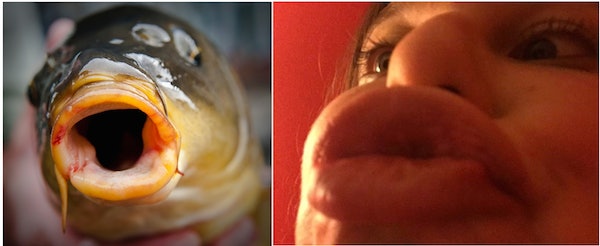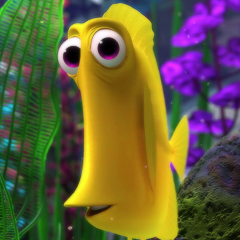

A “real” Dory might be laced with cyanide, be aggressive toward other fish ( particularly other blue tangs), and can grow to be almost a foot in length-a far cry from the diminutive, lovable character in the feature films. Some estimate that half of the living things that come into contact with that cyanide will die immediately.Īs you may have already guessed, wondering what kind of fish Dory is is a little bit more of a loaded question than just finding out her species. It can pollute waters, damage reefs, and kill fish, even some time after the fact (organ failure is not uncommon among fish exposed to cyanide).

Obviously, adding poison into a marine environment isn’t what conservationists would consider a smart move. Instead, fishermen capture them with cyanide-either squirting some at the fish directly or pumping it into the water-hoping the poison will lead some of them to the surface for easier scooping. Like many tropical fish, blue tangs have never been successfully bred in commercial aquariums (though researchers at the University of Florida may have figured out a way to change that).
FINDING NEMO FISH WITH BIG LIPS FULL
But the discourse was full of questions about the ethics of owning one. In Finding Dory’s case, a 2019 study failed to find evidence that the actual purchase of blue tangs increased after the movie's release. So much so, in fact, that animal activists voiced their concern that people were buying Dalmatians without understanding their unique temperament, leading to scores of Dalmatians ending up in shelters. When Disney released its live-action adaptation of 101 Dalmatians in 1996, the charm of the dogs onscreen had a significant impact on sales of the breed. Do ‘Dory Fish’ Make Good Pets?Ī member of the blue tang clan. According to the International Union for Conservation of Nature, the fish are known to reside near Australia, India, Thailand, Japan, Guam, American Samoa, Kenya, South Africa, and a whole host of other territories. If you’re hoping to spot a blue tang in the wild, you should head to a coral reef in either the Pacific or Indian Ocean. It’s good for the coral reefs, too, since algae build-up has been linked to a decrease in reef health and could upset the food chain. Where Would Finding Nemo’s Dory Live?Īs National Geographic reports, blue tangs live near coral reefs, where there’s plenty of algae-their main food source-for them to scrape off. Here’s a little more about what ‘Dory fish’ are like in real life-and whether one belongs in your fish tank. At night, without light to reflect off its pigmentation, it can appear white with violet touches. The name is slightly misleading, since the blue tang isn’t always blue. Finding Nemo (2003) and its 2016 sequel, Finding Dory, led to millions of Pixar viewers becoming infatuated with the friendly, forgetful Dory ( voiced by Ellen DeGeneres).ĭory’s real-life counterpart is a Paracanthurus hepatus, or Pacific blue tang fish, which is sometimes referred to as a royal blue tang or hippo tang.

Photo taken with a Canon EOS 7D and a Tokina AT-X 100mm Macro Lens. Finding Nemo big plushie Nemo needs a new. As with other members of the tang or surgeonfish families they have a blade concealed just in front of the tail in the caudal peduncle which they can raise when threatened. FINDING NEMO big plush plushie vtg soft toy stuffed toy animal doll orange clown fish vtg vintage fish nemo. The juveniles start off eating plankton and as they age so they move onto algae playing an important role in the health of a reef, preventing algae from over growing coral.ĭespite their stunning vivid colors which they have the ability to adjust from a deep blue to a purple, they also have the ability to make themselves semi transparent when in a dark space or dangerous situation, thereby blending in with the environment. This tiny fish, growing to around 3 inches in length, is a very common fish in the aquarium trade. Because of their looks they are very popular in salt water aquariums but they are fragile and require live algae to maintain their health. They are mainly seen individually and sometimes in pairs and small groups, growing up to 12 inches (30 cm). They are found across the Indo Pacific area, but nowhere are they common. Paracanthus hepatus, perhaps better known to many millions of people as Dory in the Disney Pixar films Finding Nemo and its sequel Finding Dory, is also known as a regal tang, a blue tang, palette surgeon fish, royal blue tang, flag tail surgeon fish and a blue surgeon fish, depending on which part of the world one is in. Africa Damselfish Facts Fish Fish ID Marine Life Places Popular Popular Marine Life Posts Small Oval Vertebrates Aug582


 0 kommentar(er)
0 kommentar(er)
